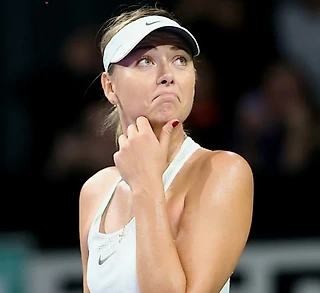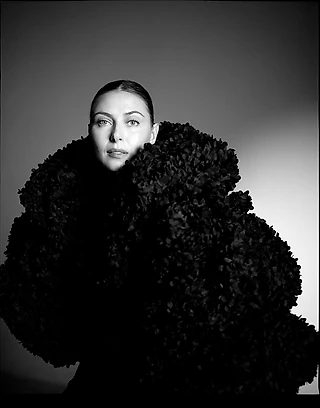The curious case of Ukraine’s samples
BEHIND THE HEADLINES: WADA’S DOPING REPORT
APR 29, 2016 | ISABELLE WESTBURY
The World Anti-Doping Agency (WADA) published its second annual Anti-Doping Rule Violations (ADRVs) Report on Wednesday evening, revealing a number of remarkable statistics. Not all of these, however, were immediately noticeable.
There are a number of headline findings, but the data also throws up some more interesting statistics that need a bit more digging to get to.
The curious case of Ukraine’s samples
Remarkably, the National Anti-Doping Centre (NADC) of Ukraine delivered just two testing samples of its athletes to WADA-accredited laboratories. In November 2015, the Foundation Board of WADA declared Ukraine’s National Anti-Doping Organisation (NADO) non-compliant as a result of using non-accredited laboratories, an action prohibited under global anti-doping rules. Ukraine has since been removed from the non-compliant list on 18 March 2016.
WADA carefully states within its report that the report is based on ‘results reported by WADA-accredited laboratories’, but during the period for which this report covers (1 January to 31 December 2014), the NADC Ukraine was considered a fully compliant member.

Ukrainetestingsamples3
Last year The Sports Integrity Initiative highlighted the fact that the NADC Ukraine ‘carried out just nine doping tests in 2013, less than the 10 carried out by Niger’. The 2014 figures show that NADC Ukraine sent even fewer samples for testing, despite sending 20 athletes to the IAAF World Indoor Championships 2014, as well as athletes in many other disciplines competing in global competitions during the report’s period.
While the Russian National Anti-Doping Organization (RUSADA) may top the charts for the Testing Authority which delivered the highest number of ADRVs, more worrying is that Ukraine hardly even featured.
Another worry is that a number of Testing Authorities who produced samples in 2013, for example Botswana (32 samples) and Azerbaijan (11 samples), did not produce a single sample in 2014, raising further questions about the consistency of testing by different NADOs around the world.
Belgium’s ADRV percentage leads the pack
It’s very easy to glance at the tables and conclude that doping in Russia, Turkey and India is the most rampant of the lot, because these testing authorities detected the highest number of ADRVs. To do this however discounts the total number of samples that were tested in order to reach these numbers.
In total 217,762 samples were tested in WADA-accredited laboratories across the world, with 1,693 ADRVs detected in total, amounting to less than 1% (0.78%) of samples received resulting in a sanction worldwide. RUSADA’s 0.88% of ADRVs as a percentage of samples tested therefore isn’t far above the global norm.
Compare this to Belgium however, and the results are very different. Of the 2,400 samples tested by NADO Flanders, 71 resulted in a sanction, amounting to 2.96% ADRVs per total number of samples tested, which is extraordinarily high. For those testing authorities that tested more than 500 samples, Belgium’s proportion of ADRVs are the highest. These findings could suggest that Belgium’s testing is extremely well directed towards athletes with a high suspicion of doping and/or that the testing itself is very robust, delivering a more accurate figure than those testing authorities with a lower percentage of ADRVs.

Belgiumadrvpercentage
On the other hand a high proportion of ADRVs per samples tested could simply mean widespread doping in the country. The testing authorities of Germany, Japan and the USA for example, all delivered some of the lowest proportion of ADRVs to samples tested.
It’s very easy to speculate on the findings, but as with the 2013 report, the data needs to be explained further to clarify the findings, and prevent misleading assumptions. Why did certain testing authorities fail to deliver any samples, or very few? If countries such as Belgium are consistently delivering a high percentage of ADRVs per samples tested, is there something that other testing authorities can learn from, or does Belgium itself need investigating?
Therapeutic Use Exemptions remain the preserve of developed nations
Last year The Sports Integrity Initiative reported on the pattern of therapeutic use exemptions (TUEs) for adverse analytical findings (AAFs) being recognised almost exclusively by NADOs in Western, English-speaking nations. In 2013, just one African and three Asian countries reported a TUE explanation for an AAF finding, compared to high numbers in the USA and Sweden, suggesting a hindrance of declaring TUEs for non-English speaking countries, as well as inconsistent procedures being followed by different testing authorities where athletes might need to legitimately apply for a TUE. A valid TUE, after all, justifies the presence of the prohibited substance in an athlete’s sample.
There appears to have been some progress in making TUE applications more accessible to ‘non-Western’ countries, in that seven Asian countries reported TUE explanations, however these countries appear to be concentrated within the wealthier Middle East nations in Asia, such as Saudi Arabia, the UAE and Bahrain.
Within Africa however, the South African Institute for Drug-Free Sport remains the only Testing Authority to report any TUEs at all, suggesting that less developed and more remote countries still struggle to recognise, document and treat certain conditions among athletes, which in turn makes them more vulnerable to anti-doping violations.
RUSADA: not a single TUE application
Within Europe, one interesting finding is that RUSADA, who tested 12,556 samples, did not report a single TUE explanation. Earlier this year Russian tennis player Maria Sharapova admitted to a positive test for the banned substance meldonium, but said that she had been taking the substance ‘on the advice of her doctor for health issues including magnesium deficiency, an irregular heartbeat, and a family history of diabetes’.
On its website, WADA explains that the TUE application process is for athltes who ‘may have illnesses or conditions that require them to take particular medications’, and if that medication happens to fall under WADA’s Prohibited List, a TUE ‘may give that athlete the authorization to take the needed medicine’. If some NADOs aren’t even considering applying for TUEs in the first place, as it appears RUSADA isn’t, then no wonder the number of ADRVs is huge.

RussianoTUEs
WADA’s highlights
Having published this data, WADA itself is keen to highlight the total number of anti-doping rule violations (ADRVs) that occurred in 2014, which totalled 1,693. This is exactly 300 fewer than in 2013 – a welcome sign perhaps that we are, slowly, winning the fight for cleaner sport.
WADA is also keen to draw attention to the effectiveness and versatility of its different methods in weeding out the dopers, with a combination of analytical ADRVs (detecting prohibited substances in an athlete sample, of which there were 1,462) and non-analytical ADRVs (231), achieved through ‘evidence-based intelligence’ (i.e. whereabouts failings, refusing/evading tests; trafficking etc.).
Interestingly, this year for the first time WADA published the number of non-analytical ADRVs attributed to ‘athlete support personnel’. In the 2013 report, despite stating that non-analytical ADRVs included these support personnel, it didn’t specify how many.
‘Of the 231 non-analytical ADRVs, 185 were committed by athletes and 46 by athlete support personnel,’ reads the report. The violations came from the support personnel of 20 different nations, including 11 from Turkey and 14 from Italy.
Mainly these violations were for possession, trafficking or administration, which is a welcome development in ensuring that not just corrupt athletes, but the system around them, are held to account.
Making the headlines elsewhere
Making the headlines across the various news outlets was the fact that Russia was the country whose athletes delivered the most ADRVs, while athletics was the sport with that equally ignominious accolade. This coverage was unsurprising perhaps, considering the problems both Russia and athletics have recently been facing in the anti-doping world.
India’s results also drew a bit of attention as it, once again, found itself within the top three of countries for the number of ADRVs among its athletes. Athletics was the sport in which most ADRVs by Indian athletes occurred, a damning indictment for a country whose last Olympic medal in the discipline came in 1900. ‘More troubles than medals’ ran one headline.
The next steps
WADA is no doubt correct to state that its annual ADRV report provides ‘the most comprehensive set of doping statistics to-date’, and it is an important step in the fight against doping for this global body to be transparent in publishing this data. Progress does appear to be happening.
However it is also important that WADA addresses the issues highlighted in that report, one of the greatest being the inconsistency between NADOs in their respective testing and reporting procedures. It is no coincidence that hundreds of Russian athletes have tested positive for meldonium, but not a single person has done so from the USA. If we want to create a fair and level playing field, global consistency needs to be a priority.
http://www.sportsintegrityinitiative.com/behind-the-headlines-wadas-doping-report/
>









